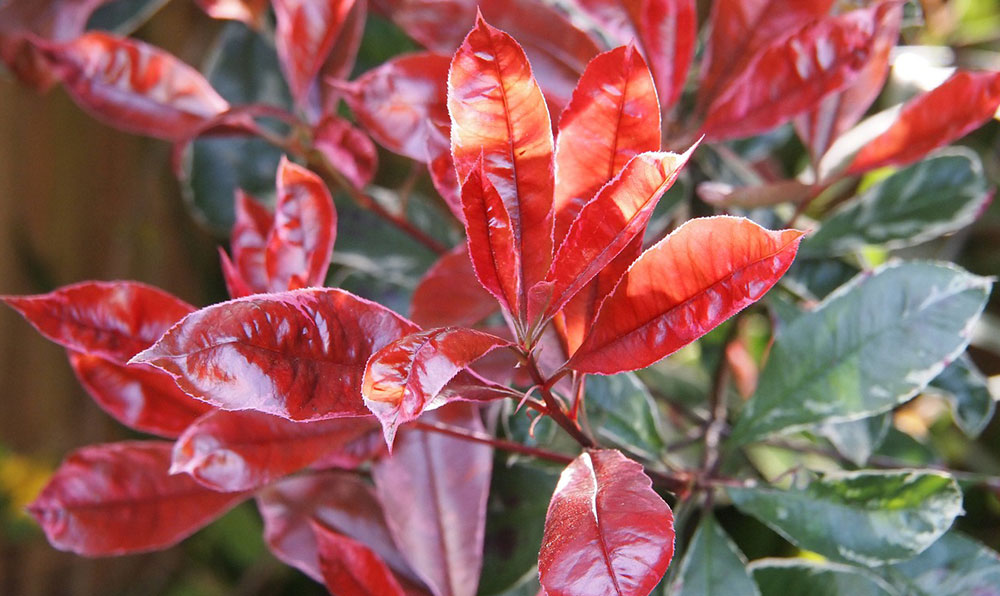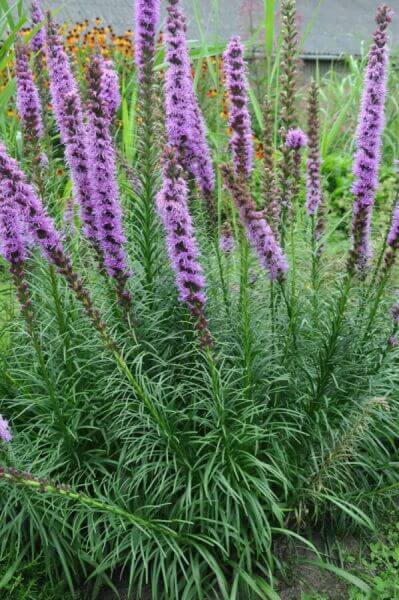Best Hedging Plants For Garden Rooms
Best Hedging Plants For Garden Rooms
Blog Article
Best Hedging Plants For Autumn Hedges
Enhance your garden's allure with lush hedge varieties such as Yew (Taxus), Thuja, Laurel, Photinia, and Bamboo, celebrated for their structural stability and ecological benefits.
Yew and Thuja supply evergreen coverage and winter season durability, while Laurel uses fast development and broad, fragrant leaves.
Photinia includes seasonal charm with its lively red foliage, and Bamboo lends a low-maintenance, peaceful ambiance.
These hedges improve air quality, lower noise, and produce tranquil, private areas.
Proper planting, spacing, and maintenance make sure vigorous growth and eco-friendly consistency.
Explore how these lavish varieties can elevate your garden's charm and well-being.
Key Takeaways
Transform Your Garden With Lush Hedge Varieties
- Select Yew for its thick, evergreen development and unrivaled durability.
- Select Laurel for its quick development and broad leaves, guaranteeing fast personal privacy.
- Pick Photinia for its vibrant seasonal foliage, which turns a striking dark red.
- Make use of Bamboo for a low-maintenance, winter-hardy hedge with visual appeal.
- Area plants 2-3 per meter and prune routinely for optimal growth and health.
Popular Hedge Plants
When changing a garden with lavish hedge ranges, it's important to consider popular hedge plants such as Yew, Thuja, Laurel, and Photinia due to their distinct qualities and benefits.
Yew (Taxus) is highly esteemed for its durability and dense, green development, making it a prime option for sustaining landscapes.
Thuja is kept in mind for its evergreen foliage and robust winter season strength.
Photinia includes seasonal vibrancy with red leaves that darken over time, producing dynamic visual appeal.
Laurel provides fast growth and aromatic, broad leaves, perfect for fast privacy.
Furthermore, Bamboo is an outstanding option for ambiance, offering a low-maintenance, winter-hardy option that boosts the garden's visual with its sophisticated, swaying walking sticks.
These selections cater to a range of horticultural requirements and choices.
Benefits of Garden Hedges
Garden hedges offer a multitude of advantages, making them a valuable addition to any landscape. These natural barriers are cost-effective to carry out and offer considerable wind protection, boosting air circulation and contributing to sound reduction. The dense foliage of hedges like Thuja and Beech ensures personal privacy by blocking presence, producing a secluded and tranquil environment.
Hedges also play a vital function in microclimate regulation, supplying a stable environment that fosters plant development and minimizes temperature level changes. Their intricate leaf structures filter toxins, improving air quality and adding to a healthier garden environment.
Furthermore, hedges excel in sound reduction, taking in and deflecting sound waves to lower ambient noise levels. This double functionality of offering both visual and acoustic privacy boosts the total serenity and visual appeal of any garden.
Planting and Maintenance Tips
For an effective hedge, careful preparation of the planting area is vital. Ensure the soil has appropriate pH and drain to support strong root advancement.
Space the plants appropriately for the selected types. Water the hedge regularly during its initial development stage, adjusting as needed with seasonal changes.
Implement a organized insect control and illness prevention technique, utilizing chemical or organic treatments when needed. Frequently check for aphids, mites, and fungal infections.
Apply mulch to keep wetness and reduce weeds. Seasonal pruning promotes thick growth and air blood circulation, vital for plant health.
Following these standards will assist you cultivate a vibrant, well-kept hedge that improves the charm of your garden.
Spacing and Cutting Standards
Spacing and Cutting Standards
Correct spacing and cutting are crucial for cultivating healthy, visually appealing hedges. Adequate spacing makes sure each plant receives adequate nutrients, light, and airflow.
Follow these guidelines for optimal hedge maintenance:
- Spacing: Position hedge plants 2-3 plants per meter to encourage robust growth.
- Pruning Strategies: Regular pruning is important for preserving preferred hedge height and shape. Trim new growth in summer and cut back older wood throughout winter season.
- Seasonal Care: Change cutting schedules and approaches according to seasonal requirements to guarantee plant health.
- Hedge Height: Routinely screen and trim to keep the wanted hedge height and accomplish uniform visual appeals.
Sticking to these steps will ensure your hedge grows, improving both the appeal and functionality of your garden.
Picking the Right Hedge
Picking the Right Hedge
Choosing the appropriate hedge includes assessing factors such as fully grown height, foliage density, and environmental resilience. Effective hedge plant choice requires comprehending each species' development qualities and site-specific adaptability.
For instance, Yew (Taxus) offers exceptional durability and thick growth, while Thuja is significant for its winter strength. Furthermore, considering maintenance requirements is crucial; fast-growing types like Laurel or Privet need regular cutting, whereas low-maintenance options like Bamboo or Ivy may be more suitable for those looking for minimal maintenance.
Environmental elements such as soil type, light availability, and moisture conditions need to also assist the selection procedure. This careful method makes sure the selected hedges will prosper, providing both functional and aesthetic advantages to the garden landscape.
Delivery and Planting Recommendations
To guarantee your hedge plants thrive, they must be delivered by specialized carriers and planted quickly upon arrival.
Follow these necessary steps for successful planting:
- Soil Preparation: Enhance the soil with raw material to improve drainage and nutrient content.
- Planting Depth: Produce a trench two times the width and equivalent to the depth of the root ball.
- Watering Techniques: Water thoroughly after planting, keeping the soil consistently damp however not filled.
- Mulching: Apply a layer of mulch to keep moisture and reduce weeds.
Client Assistance and Service
Offered the crucial role of timely support in horticultural pursuits, our client support group is offered 6 days a week through telephone, e-mail, and social networks to use skilled suggestions and promptly address any concerns. Their commitment to fast reaction times guarantees client fulfillment by solving questions associated with plant health, optimal planting approaches, and upkeep schedules.

Reaction Time
-------------------
Within two days
Within 24 hours
This comprehensive support group, reinforced by an excellent 9.3/ 10 consumer ranking, highlights our dedication to improving the gardening experience for each client.
Frequently Asked Concerns
The Length Of Time Does It Take for Hedge Plants to Establish?
Hedge plants generally require one to 3 years to end up being fully established, with the exact duration varying by species and growing conditions.
Effective care throughout this critical duration is necessary for robust growth. Consistent watering, vigilant weed control, and suitable fertilizer application are critical in promoting strong root development.
For instance, fast-growing species like Laurel might develop faster, while slower-growing varieties such as Yew might take longer. Diligent maintenance accelerates the establishment process, leading to thick and healthy hedges.
What Are the Best Hedge Plants for Privacy?
The concern of the very best hedge plants for privacy involves evaluating evergreen and deciduous alternatives.
Evergreen hedges like Thuja, Laurel, and Cypress offer year-round coverage, ensuring constant personal privacy.
In contrast, deciduous hedges such as Beech provide seasonal personal privacy, shedding leaves in chillier months.
Key upkeep ideas for privacy hedges consist of routine trimming, fertilizing in spring, and correct spacing-- usually 2 to 3 plants per meter.
Additionally, constant watering and persistent weed elimination are important for promoting healthy, dense development.
Can Hedge Plants Attract Wildlife to My Garden?
Yes, hedge plants can bring in wildlife to your garden by offering essential benefits like shelter, food, and nesting websites, thus boosting local biodiversity. Yew, holly, and laurel are outstanding for attracting birds, while ivy supports a variety of pests.
However, it is necessary to note that there are some downsides, such as increased maintenance to manage bugs and regular maintenance. Thoroughly selecting and keeping hedge varieties can help stabilize these benefits and disadvantages, ultimately cultivating a vibrant and sustainable environment in your garden.
Are There Any Flowering Hedge Plants Available?
Yes, there are flowering hedge plants readily available that can enhance the charm of your garden.
For instance, Elaeagnus, also called Olive Willow, produces aromatic white flowers in the fall, including a touch of elegance.
Photinia, another popular choice, showcases lively red leaves that grow into a rich green, creating a dynamic visual impact throughout the seasons.
To make sure these plants thrive, it's important to practice appropriate pruning strategies and seasonal upkeep, such as trimming new growth in the summertime and cutting down in the winter.
These procedures will assist maintain the health and aesthetic appeal of your flowering hedges.
How Do I Prevent Insects in My Hedge Plants?
To prevent insects in hedge plants, utilize natural insect control techniques and maintain appropriate hedge care. Introduce here useful bugs like ladybugs, which victimize damaging bugs, to develop a well balanced community.
Routinely check your hedges for indications of infestation and quickly remove any affected parts to prevent the spread. Ensure the health of your hedges by applying balanced fertilizers and providing appropriate water.
Utilize mulching to keep soil wetness and proper spacing to reduce plant stress and promote robust development. These practices jointly help in reducing pest issues and keeping a healthy hedge.
Conclusion
In essence, picking the best hedge varieties such as Yew, Thuja, and Laurel can change any garden into a relaxing haven. These plants provide year-round plant, improve aesthetic appeal, and deal useful benefits like sound decrease and wind protection.
Correct planting methods, accurate spacing, constant watering, and seasonal trimming are vital for optimum growth.
Reputable delivery services and skilled client support make sure a seamless experience from purchase to planting, making it easier than ever to elevate your outside space.
Garden hedges use a wide variety of benefits, making them an important addition to any landscape. These natural barriers are cost-effective to carry out and provide substantial wind protection, improving air circulation and contributing to sound decrease. The dense foliage of hedges like Thuja and Beech makes sure privacy by blocking presence, producing a remote and serene environment.

Pruning Strategies: Routine pruning is vital for maintaining desired hedge height and shape. Cut new growth in summer season and cut back older wood during winter season.
Report this page